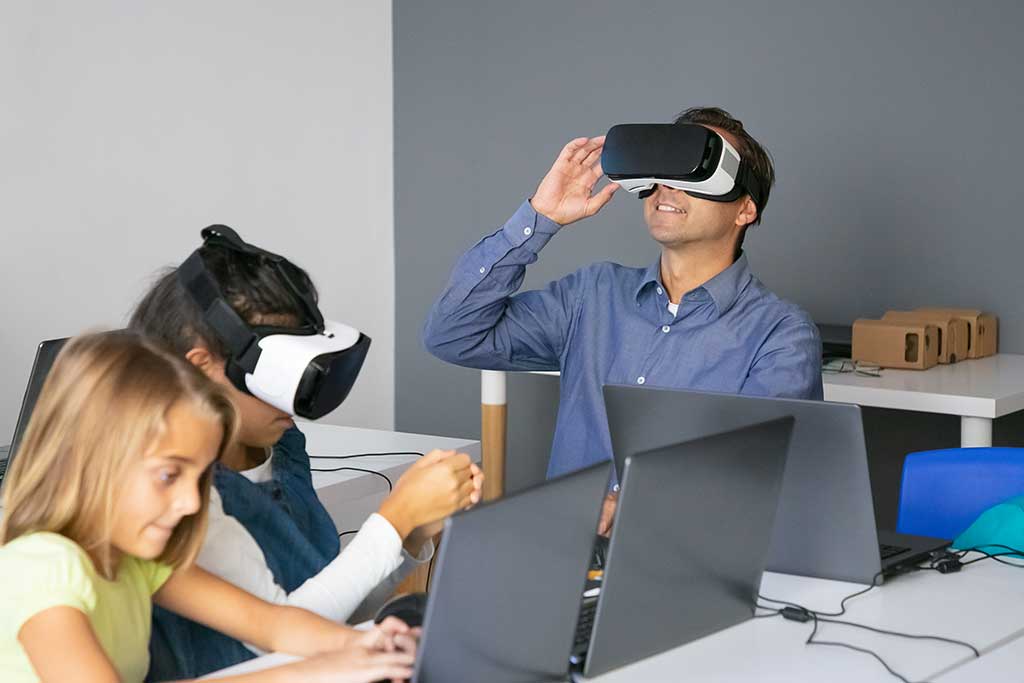Now Reading: A Simple Guide to How AI Machine Learning Works
-
01
A Simple Guide to How AI Machine Learning Works
A Simple Guide to How AI Machine Learning Works

AI and Machine Learning are tools that help computers learn and perform intelligent tasks. From writing assistants to smart maps, these technologies are now in everyday apps, making our work easier and boosting creativity for everyone, even without a technical background.
We are surrounded by smart technology. Your phone unlocks when it sees your face. YouTube suggests videos you end up loving. Google Maps predicts the traffic on your route home. Behind all these wonders is a powerful technology called Machine Learning (ML), a core part of Artificial Intelligence (AI).
But how does it actually work? It seems like magic, but it’s not. It’s a fascinating process that is surprisingly similar to how we humans learn. This article will break down this complex topic into simple, easy-to-understand steps for everyone, from a student to a grandparent.
The Core Idea: Learning from Examples, Not Rules
Think about how a child learns to identify a cat. You don’t give the child a rulebook with definitions of fur, whiskers, and tails. Instead, you show them many pictures and say, “This is a cat,” and “This is not a cat.” Over time, the child’s brain figures out the patterns and can recognise a cat it has never seen before.
Machine Learning works in the exact same way. Instead of programming a computer with specific rules like “If it has whiskers, it is a cat,” we show it thousands of examples and let it figure out the patterns on its own.
The Four Key Steps of the Machine Learning Process
The journey of a machine learning model can be broken down into four major stages. Let’s use a simple example: creating an ML system that can distinguish between a picture of a Roti and a Naan.
Step 1: Data Collection and Preparation — Gathering the Learning Material
Just as a child needs many pictures to learn, an ML model needs a lot of data. This is the most crucial step.
- Data Collection: For our Roti/Naan classifier, we need to gather thousands of images. Some will be of roti, some of naan, and maybe some of other breads like kulcha or paratha to make it smarter. This collection of data is called a dataset.
- Data Labelling: This is where we “teach” the computer. We go through each image and tag it. We tell the computer, “This image is a Roti,” and “This image is a Naan.” This process is called labelling, and it’s what makes this type of learning “supervised.”
- Data Cleaning and Preprocessing: Not all images will be perfect. Some might be blurry, some might show half-eaten bread, and others might have poor lighting. Just like we wash and chop vegetables before cooking, we need to clean our data. We might resize all images to the same dimension, adjust their brightness, and remove the bad ones. This ensures the model learns from high-quality, consistent examples.
Think of this step as a teacher gathering textbooks, notes, and diagrams before starting a new chapter in class.
Step 2: Model Training — The Actual Learning Phase
Now that our data is ready, it’s time for the real learning to begin. We choose a model, which is essentially a mathematical formula that is initially blank and knows nothing.
- Feeding the Data: We feed our labelled dataset (the roti and naan images) into this model.
- Finding Patterns: The model starts its work. It analyzes the images, looking for patterns. It might notice that naan often has bubbles or a charred surface from the tandoor, while roti is usually smoother and thinner. It translates these visual features into mathematical patterns.
- Making Mistakes and Adjusting: The first time the model sees a picture, it will make a random guess. It might look at a clear picture of a roti and say, “I think this is naan.”
We then tell it the correct answer: “No, that was wrong. This is a roti.”
The model feels a bit “embarrassed” and goes back to adjust its internal mathematical formula slightly so that it will be less wrong the next time it sees a similar image.
This process of guess → check → adjust happens thousands, even millions of times, for every single image in the dataset.
This is the “training” phase. The model is slowly tuning itself, getting better and better at spotting the differences between roti and naan.
Step 3: Prediction and Evaluation — The Final Exam
After the model has been trained on our dataset, we need to test it. We cannot just trust it because it did well on the images it learned from. We need to see if it can perform in the real world.
- The Test Dataset: We hold back a separate set of images that the model has never seen before. This is its final exam. We don’t show these images during training.
- Making Predictions: We show the model a new picture of a roti from this test set and ask, “What is this?”
- Checking Accuracy: The model makes its prediction. We then check if it was right or wrong. We do this for all the images in the test set to calculate an accuracy score—for example, “Our model correctly identifies roti and naan 95% of the time.”
If the accuracy is high, the model is ready for the real world. If it’s low, it means it didn’t learn well enough, and we need to go back.
Step 4: Iteration — The Cycle of Improvement
Machine learning is rarely a one-time process. It’s a cycle of continuous improvement, known as iteration.
- What if the Model Fails? Imagine our model starts misidentifying a rumali roti as a naan because it’s thin and large. This is a failure.
- The Feedback Loop: We take this new example of a rumali roti, label it correctly, and add it to our original dataset. Then, we go back to Step 1.
- Retraining: We train the model again, but this time with the new, improved dataset that includes rumali roti. This makes the model smarter and more robust.
This iterative process is how models get better over time. Just like a student who learns from their mistakes in a mock test and performs better in the final exam.
Bringing It All Together: A Real-World Indian Example
Let’s see how these steps apply to a UPI payment app with a fraud detection system.
- Data Collection: The bank gathers millions of past transaction records.
- Data Labelling: Each transaction is labelled as “Normal” or “Fraudulent.”
- Model Training: The ML model studies the patterns of fraudulent transactions—maybe they happen at odd hours, from new devices, or are for unusual amounts.
- Prediction: When you make a new transaction, the model instantly checks it against the patterns it has learned. If it looks suspicious, it can flag it or block it.
- Iteration: When a new type of fraud emerges, that data is fed back into the system, making the model smarter for the future.
Conclusion: The Pattern-Seeking Engine
At its heart, Machine Learning is a powerful pattern-seeking engine. It’s not about building a robot that thinks like a human, but about building a system that can learn from vast amounts of information in a way that is superhuman in scale and speed.
By understanding the simple cycle of Data → Train → Predict → Improve, we demystify the technology that is shaping our world. It’s a tool of incredible potential, and understanding how it works is the first step towards using it wisely.
Stay Informed With the Latest & Most Important News
Previous Post
Next Post
-
 01Does Free Money Exist? The Real Story of How Your Passive Income Gets Taxed in India
01Does Free Money Exist? The Real Story of How Your Passive Income Gets Taxed in India -
 02Beyond the First Rupee: Building Your Personal System for Passive Income Success in India
02Beyond the First Rupee: Building Your Personal System for Passive Income Success in India -
 03Your Journey to Financial Freedom: A Simple Guide to Building Passive Income in India
03Your Journey to Financial Freedom: A Simple Guide to Building Passive Income in India -
 04Your Extra Income Journey: Top Side Hustles to Boost Your Earnings in India
04Your Extra Income Journey: Top Side Hustles to Boost Your Earnings in India -
 05The Right Way for Kids to Learn Technology: A Guide for Indian Parents
05The Right Way for Kids to Learn Technology: A Guide for Indian Parents -
 06A New World at Your Fingertips: A Simple Guide to Technology Tutorials for Seniors
06A New World at Your Fingertips: A Simple Guide to Technology Tutorials for Seniors -
 07Your Guide to Learning Technology in 2025: Simple, Smart, and Effective
07Your Guide to Learning Technology in 2025: Simple, Smart, and Effective
































